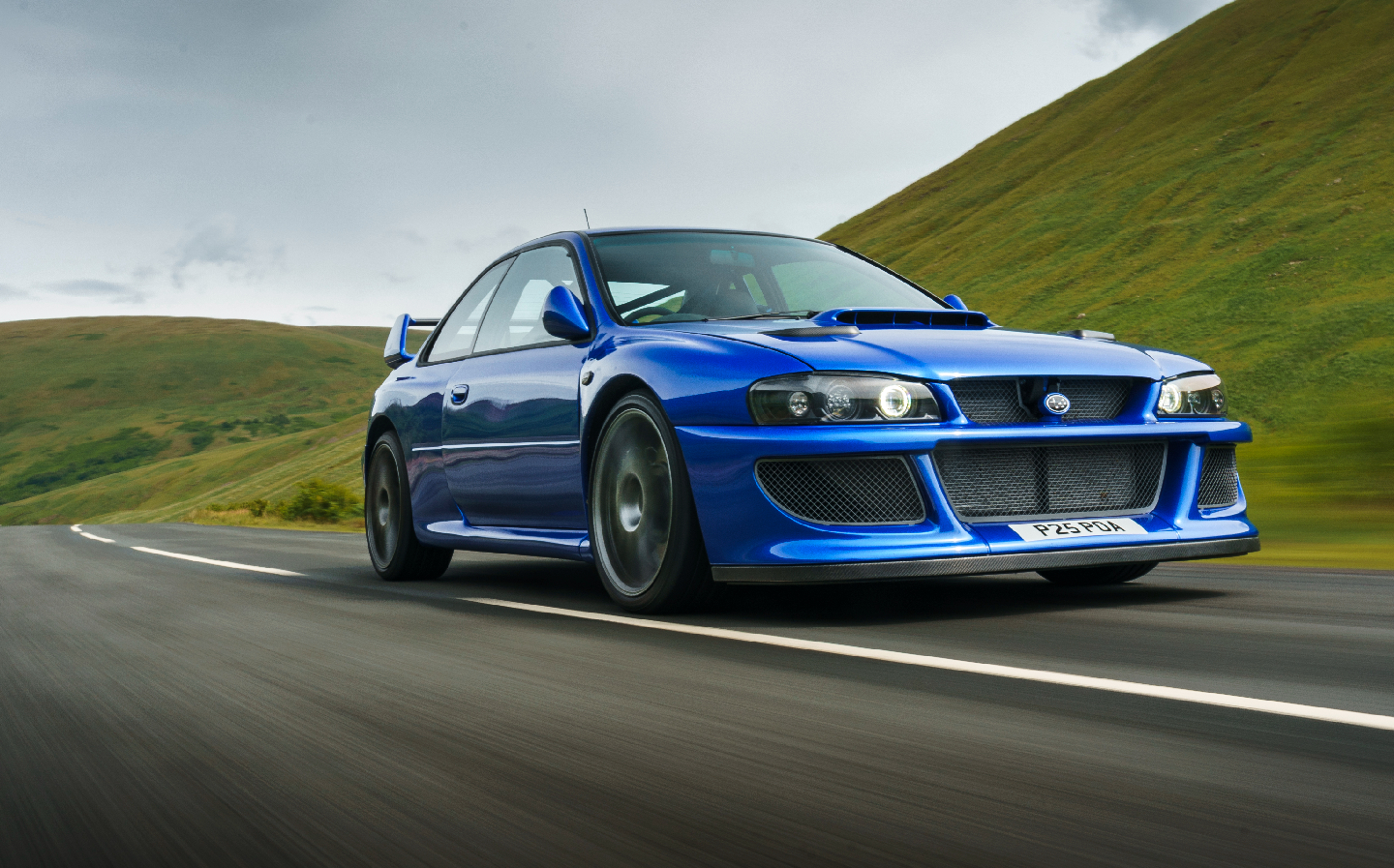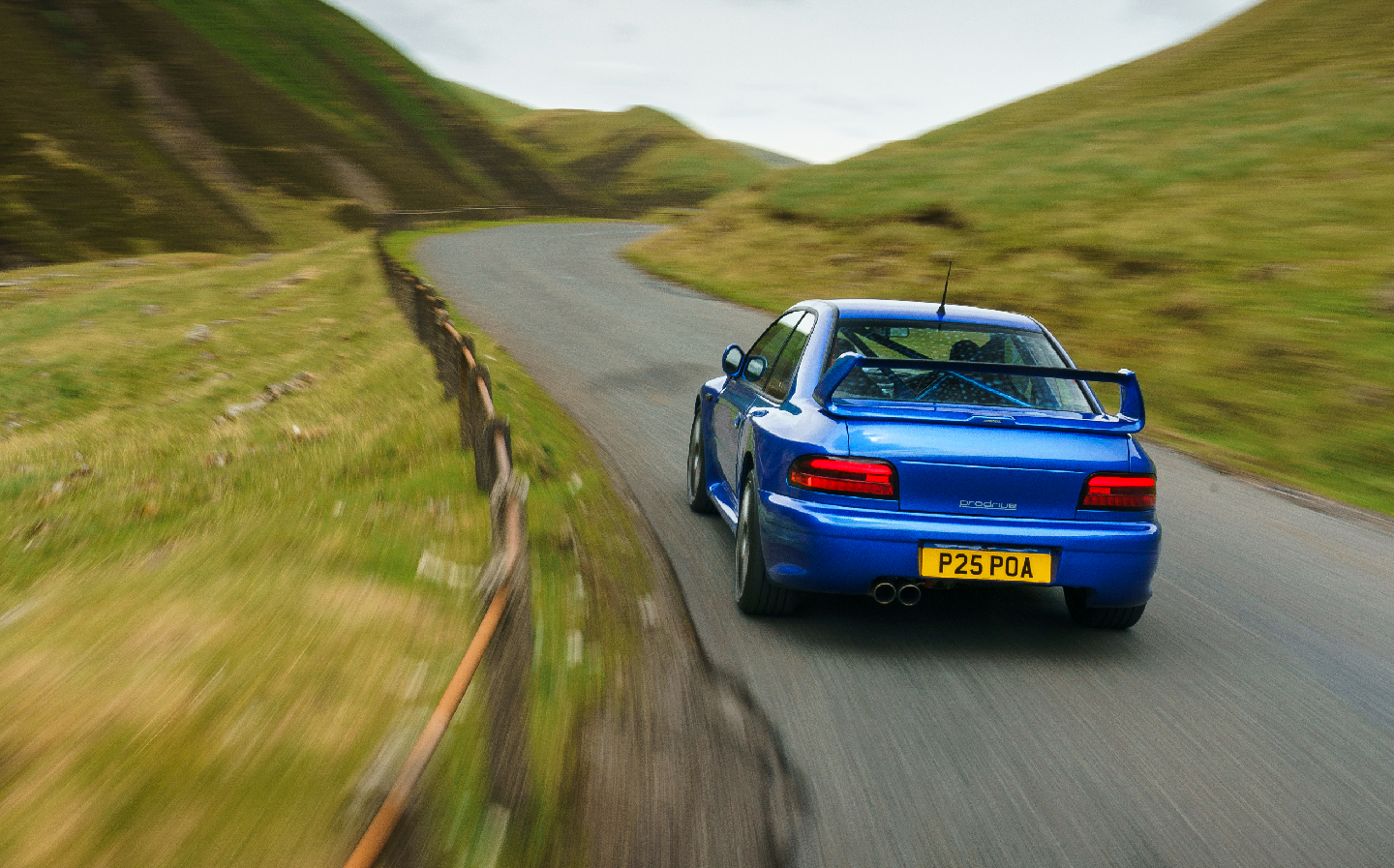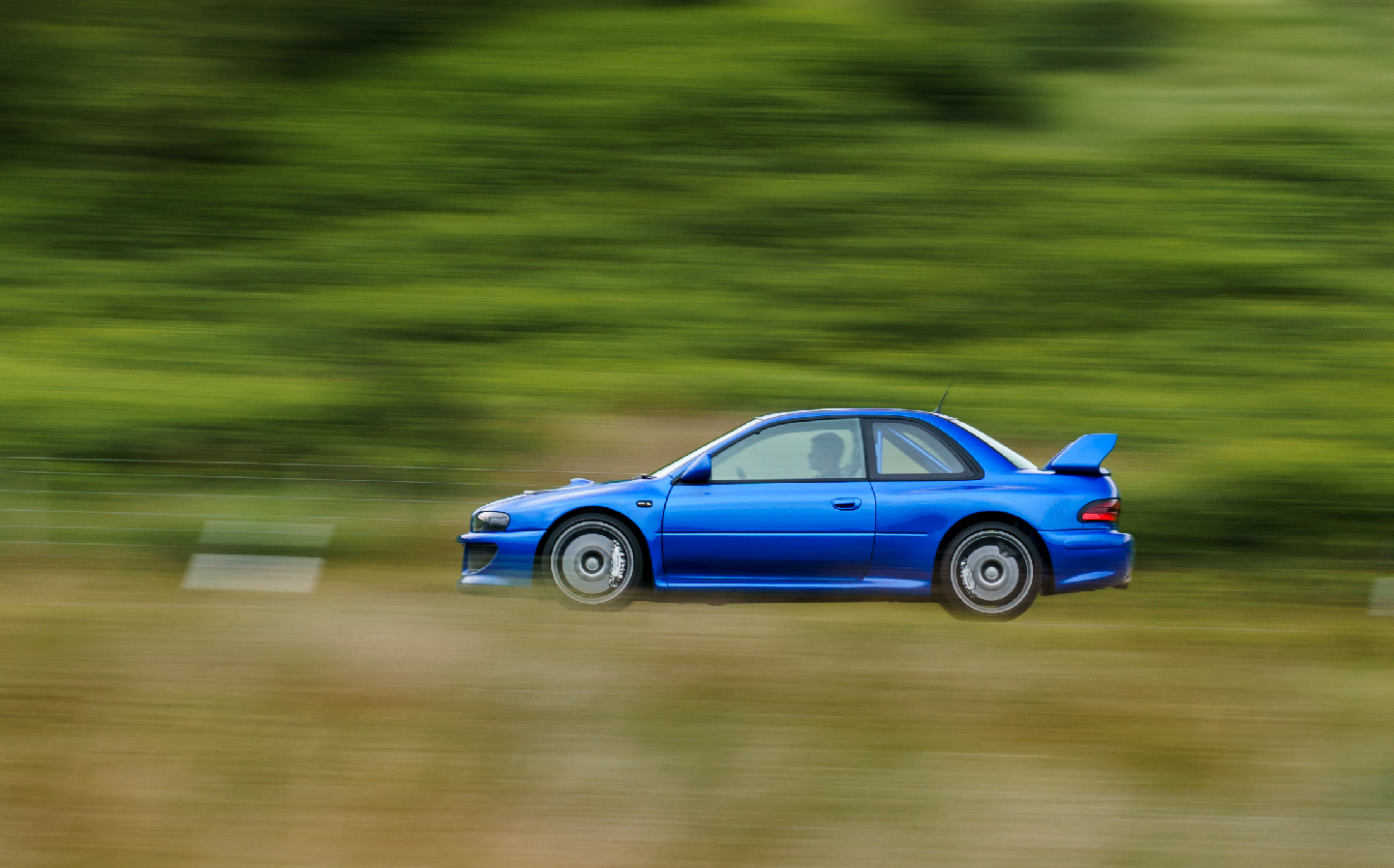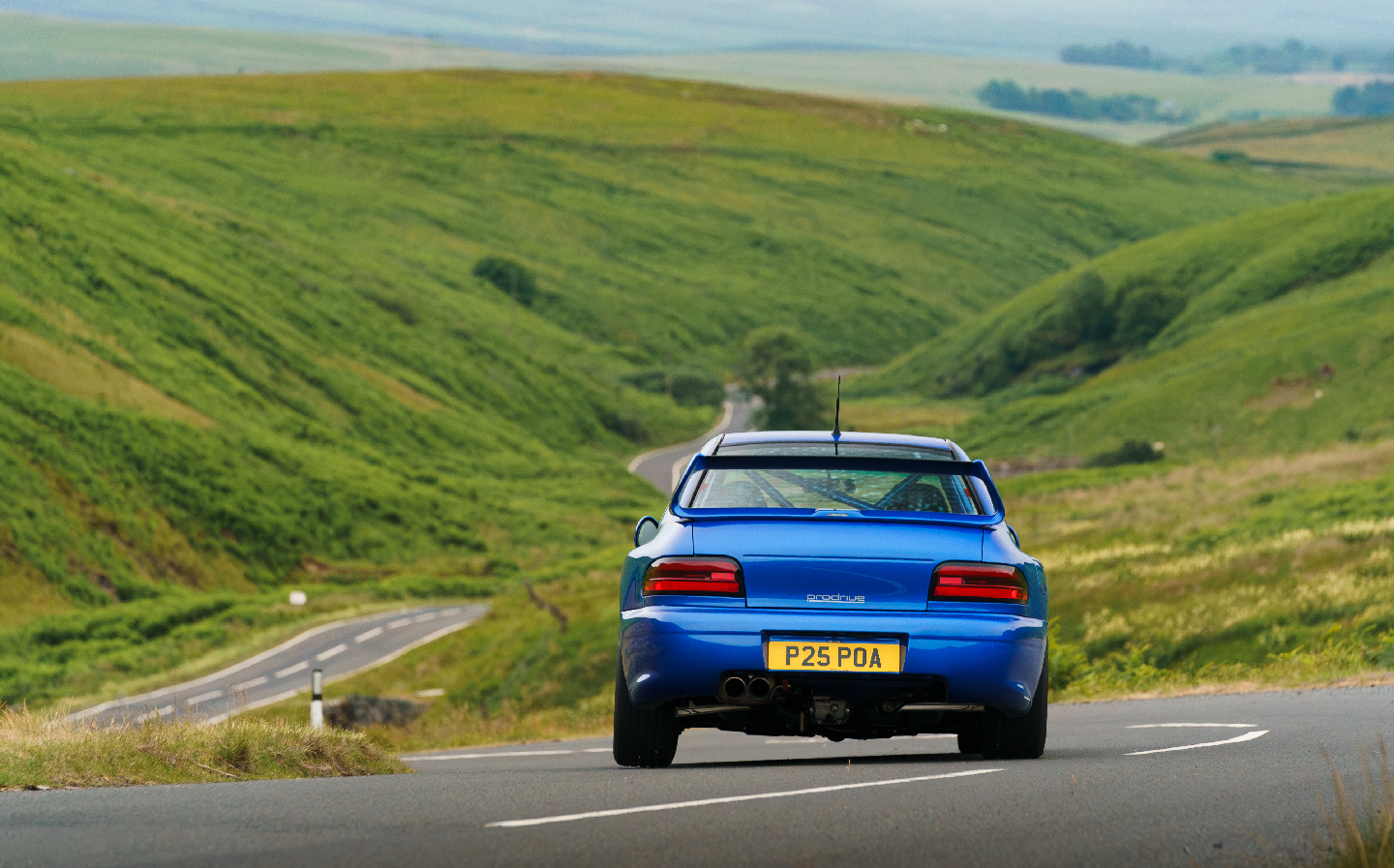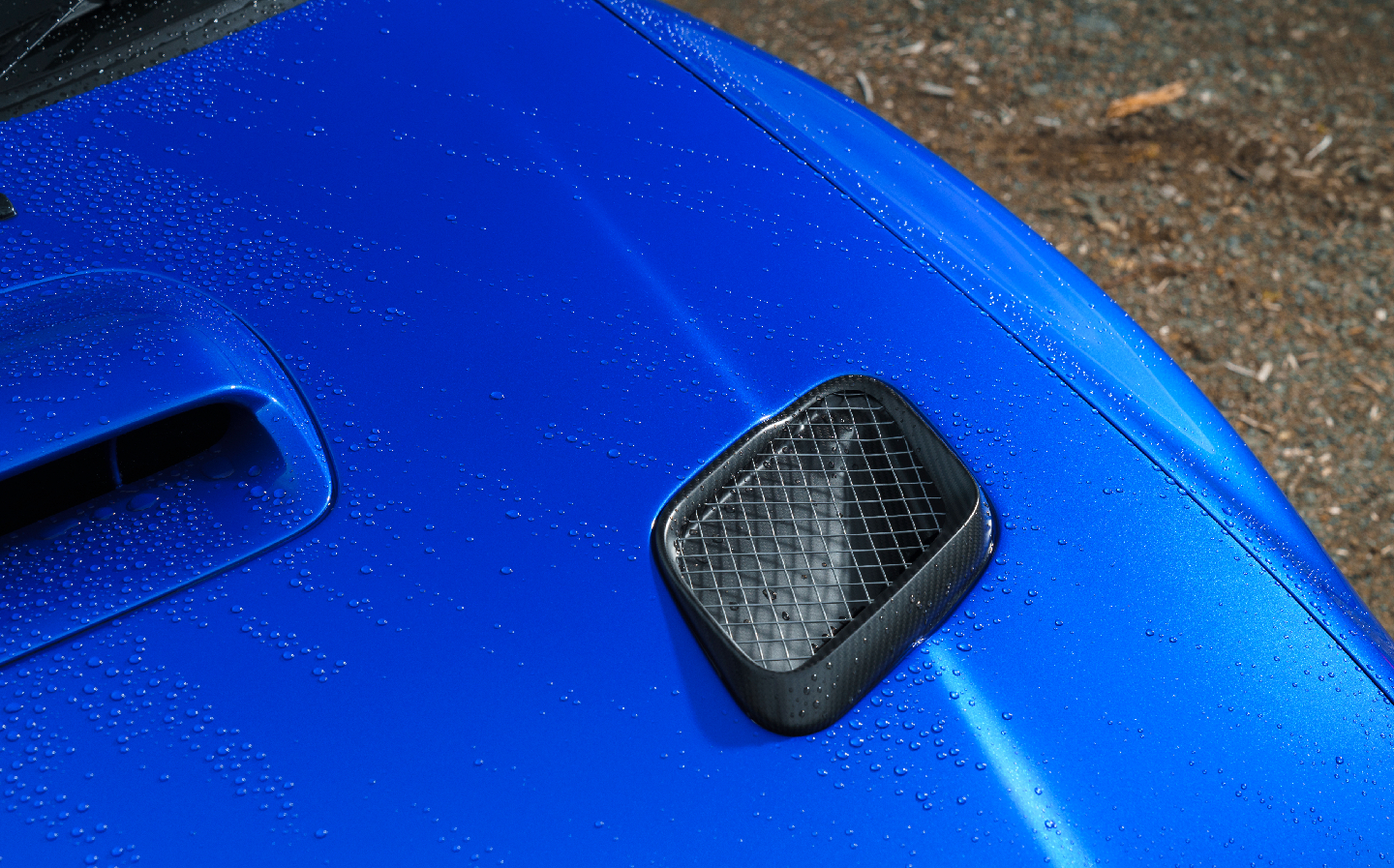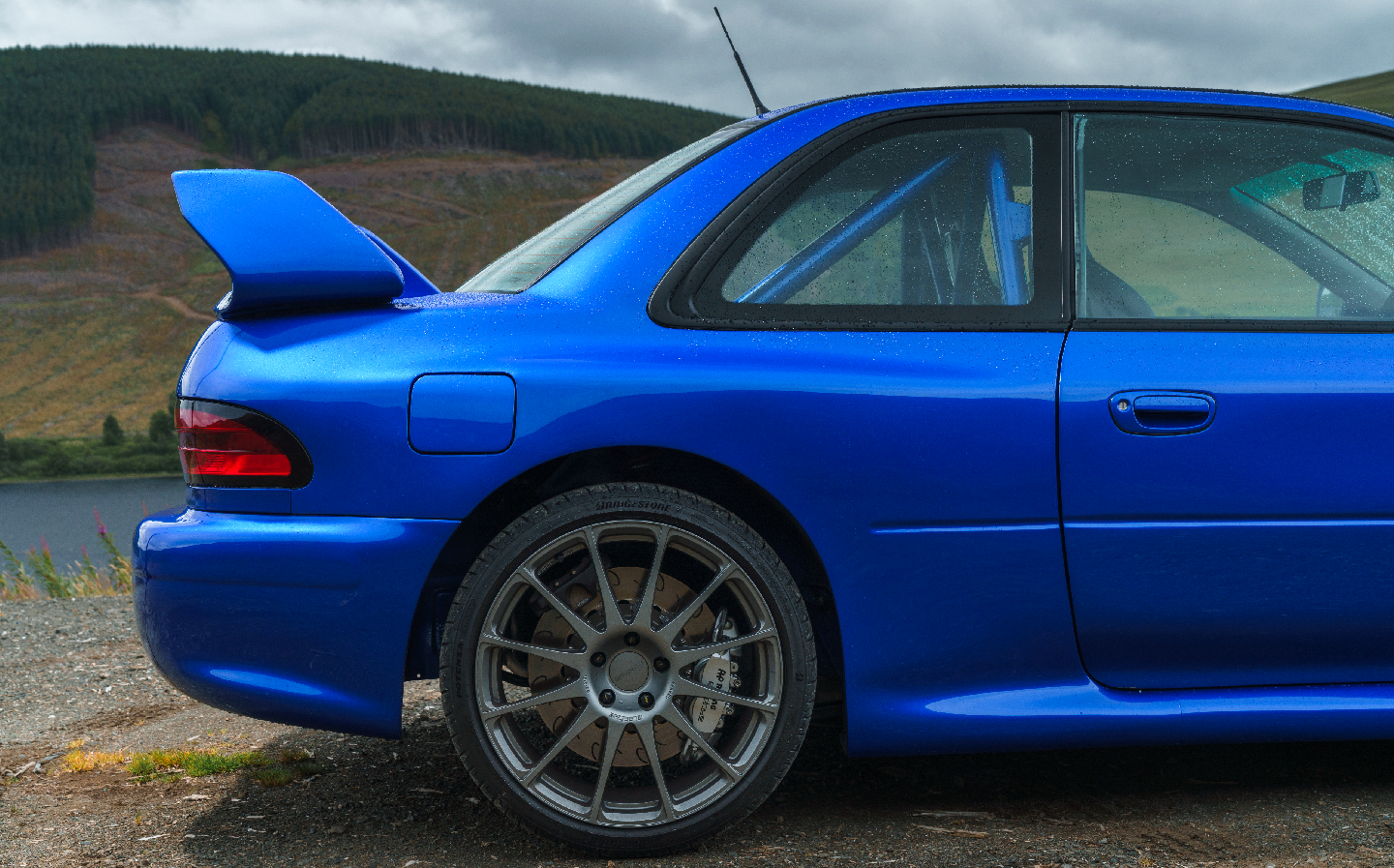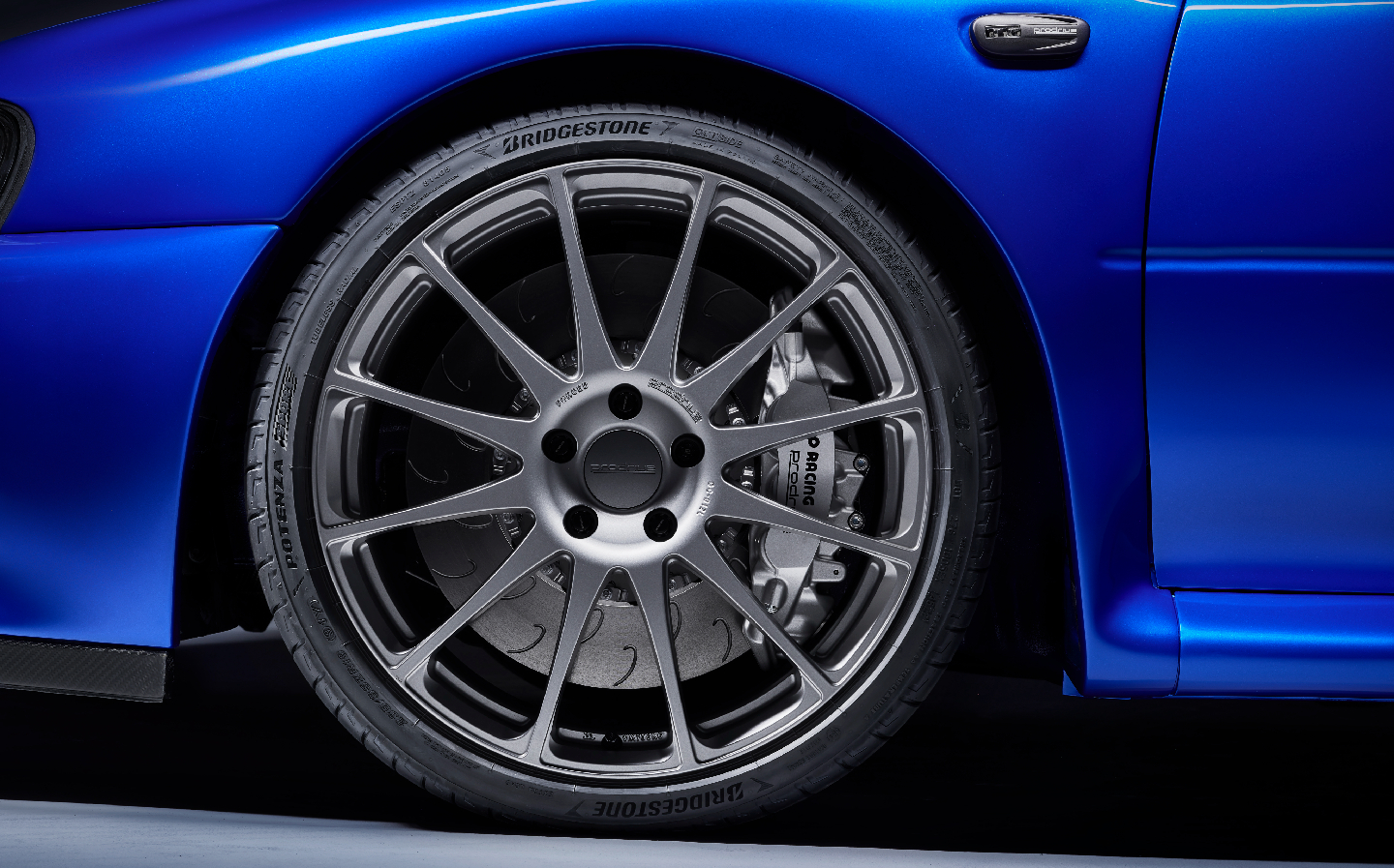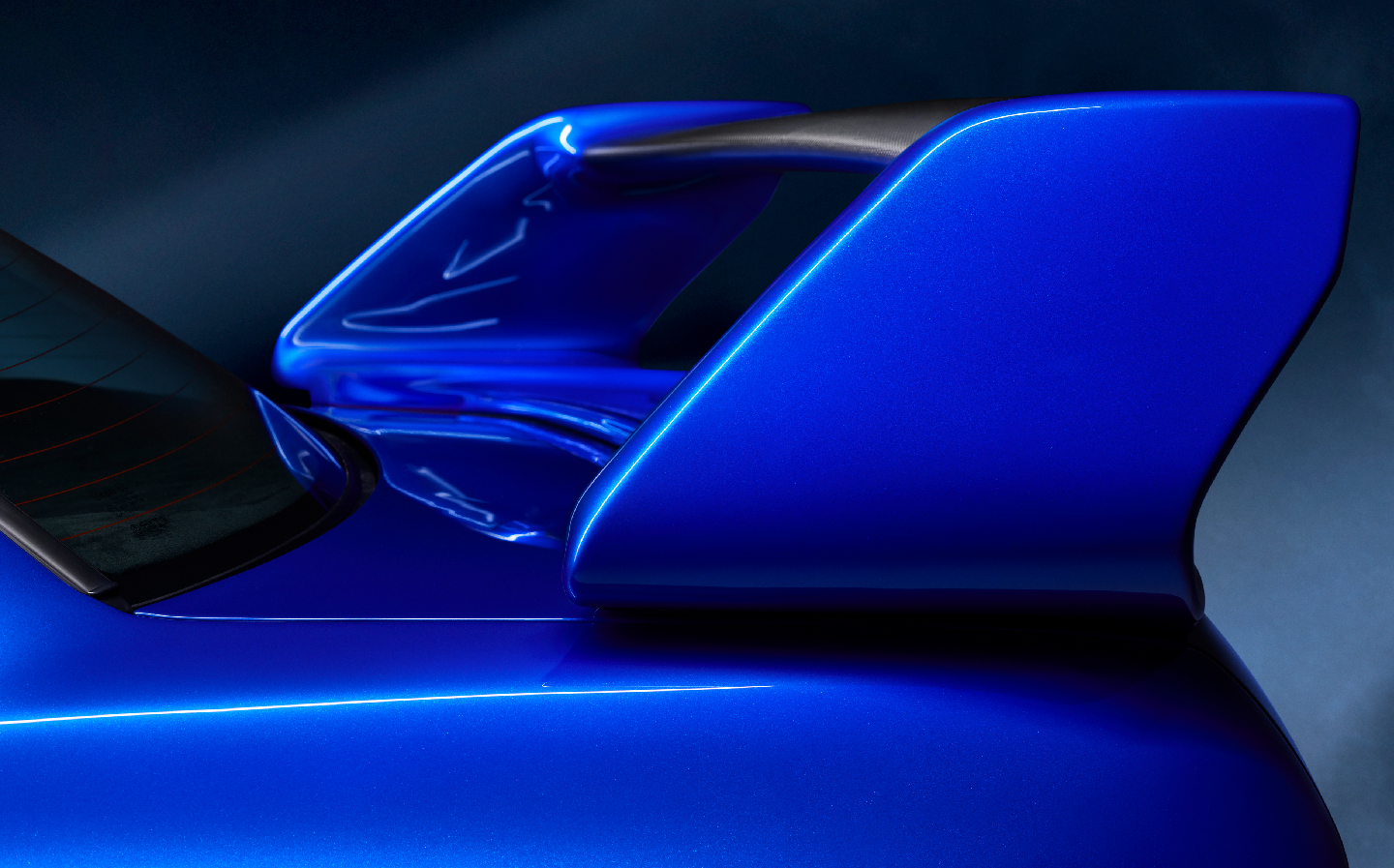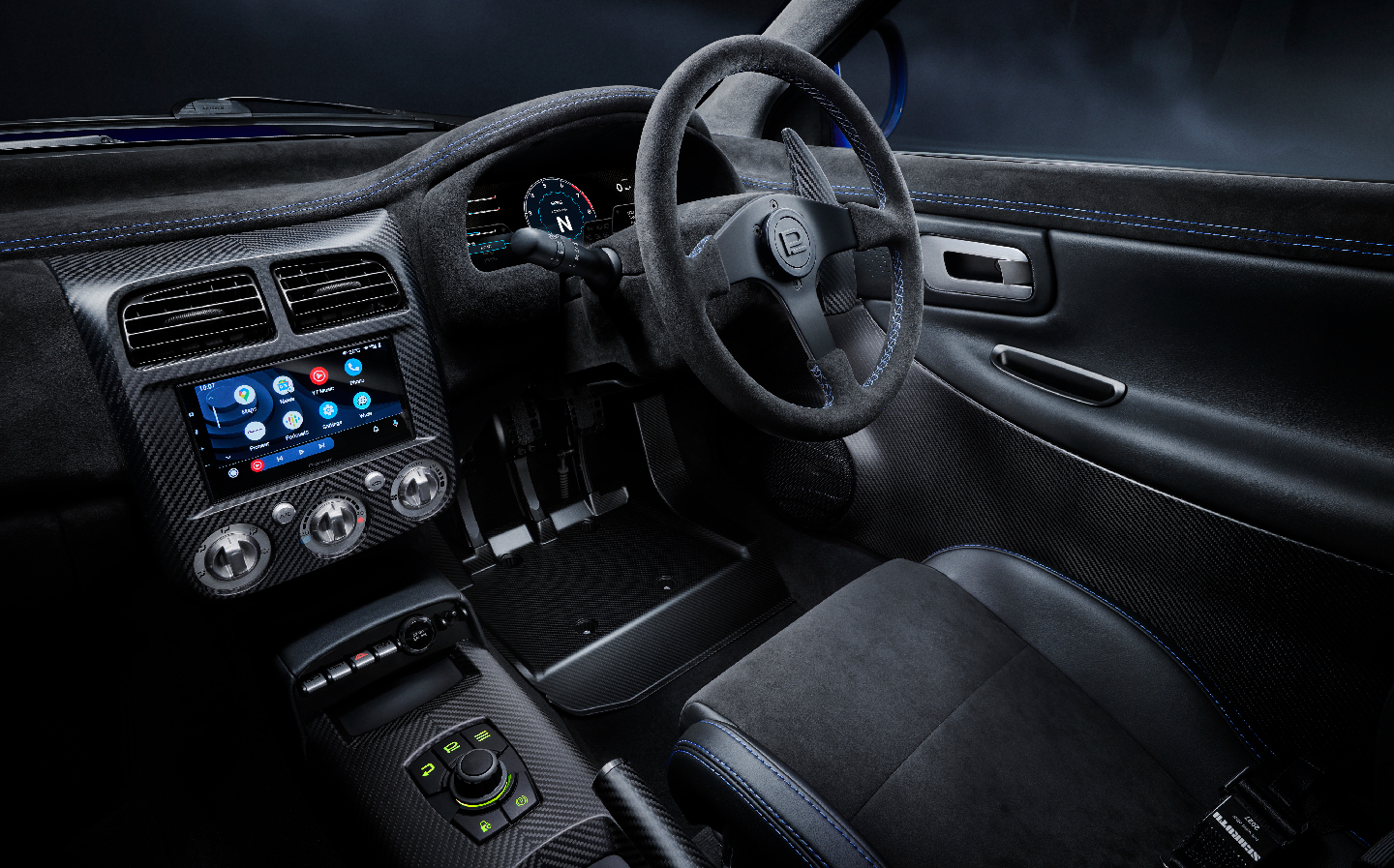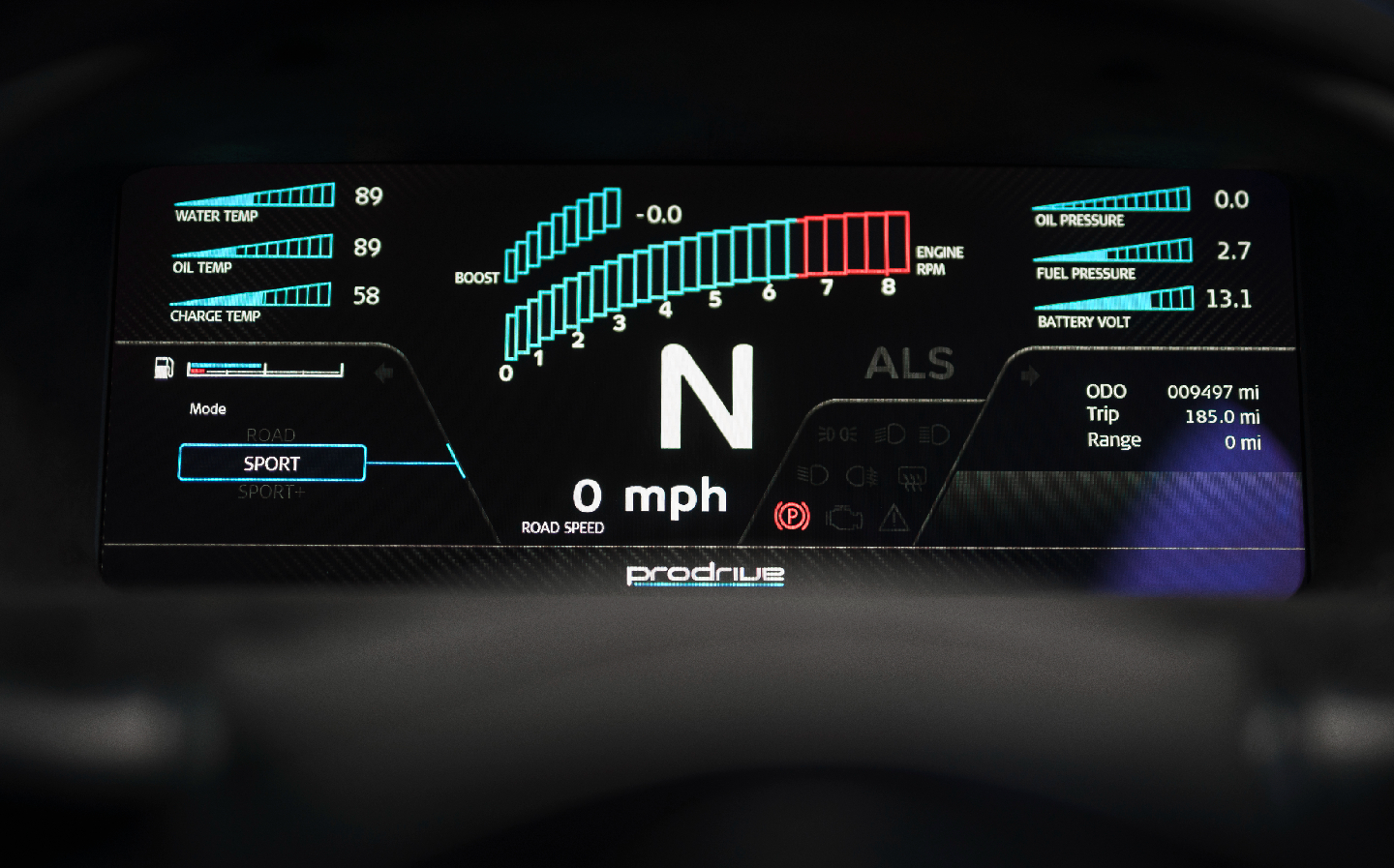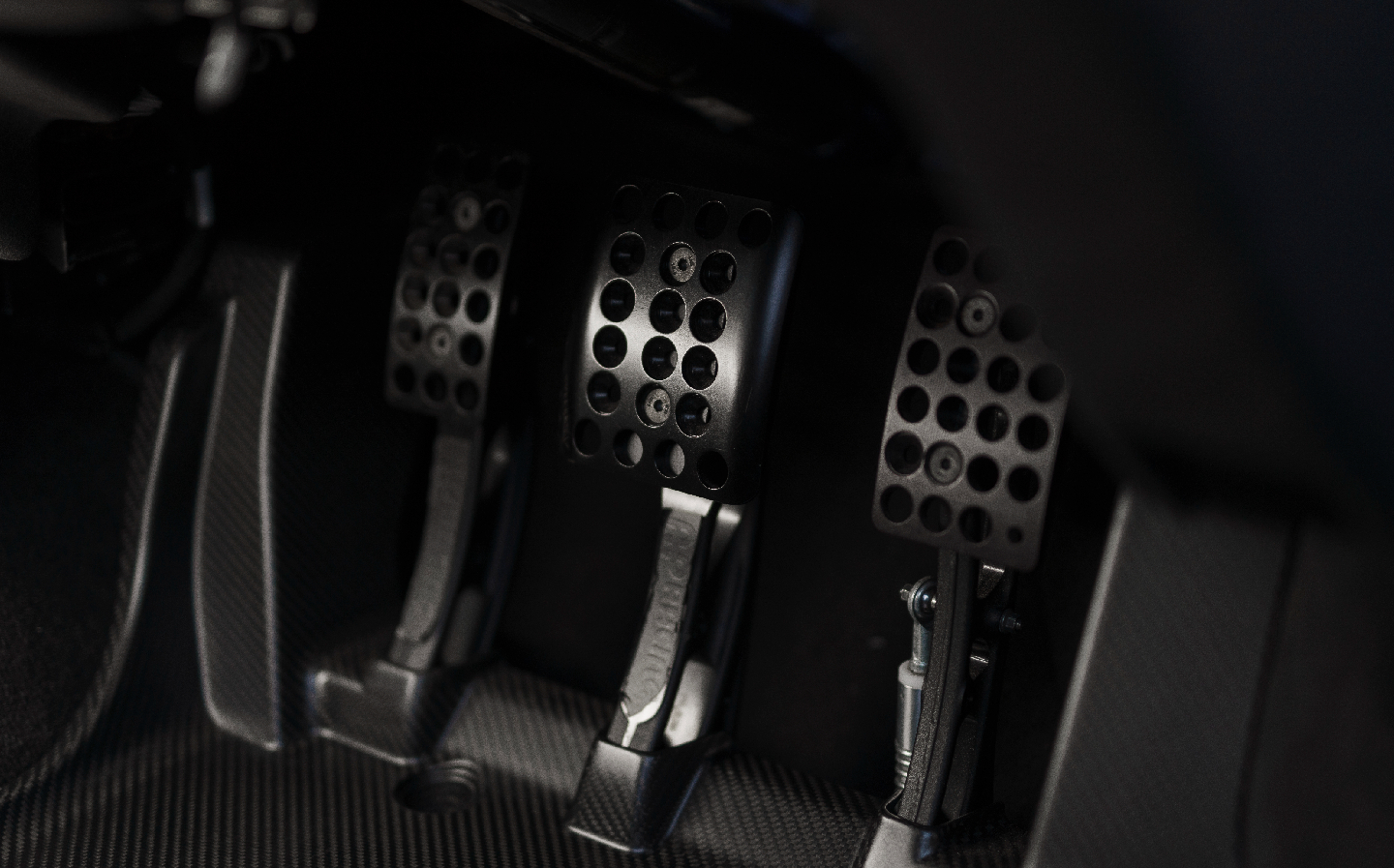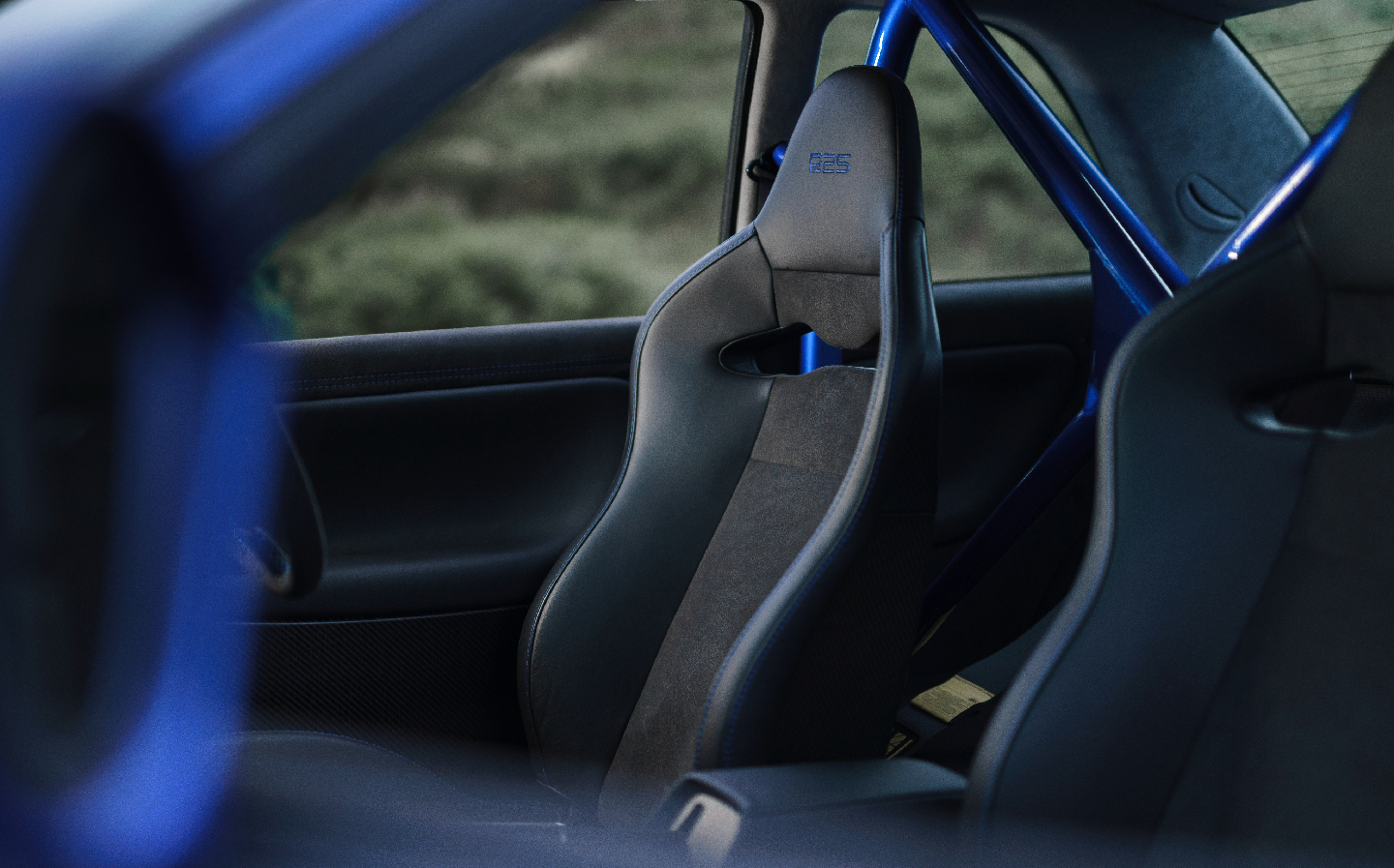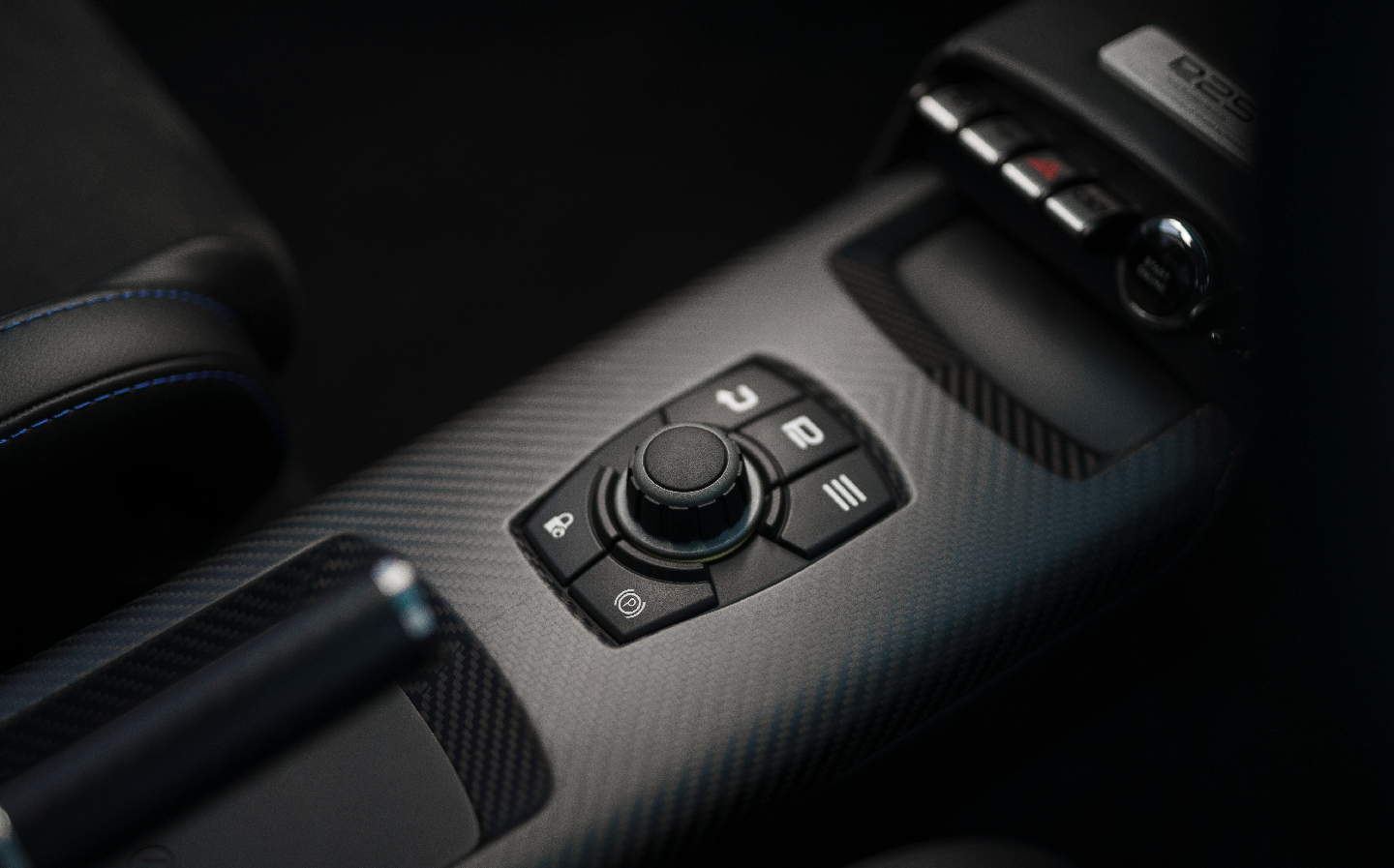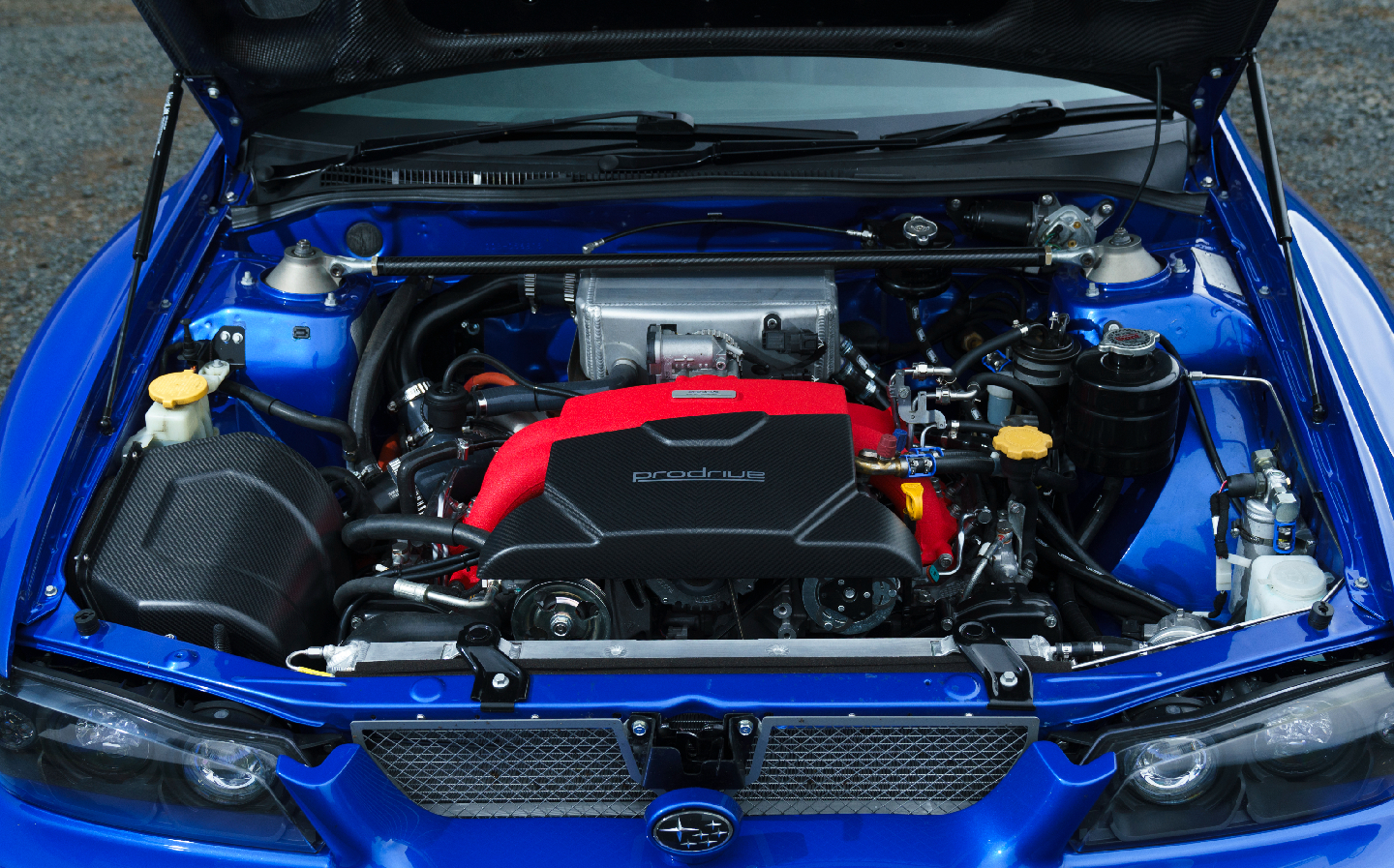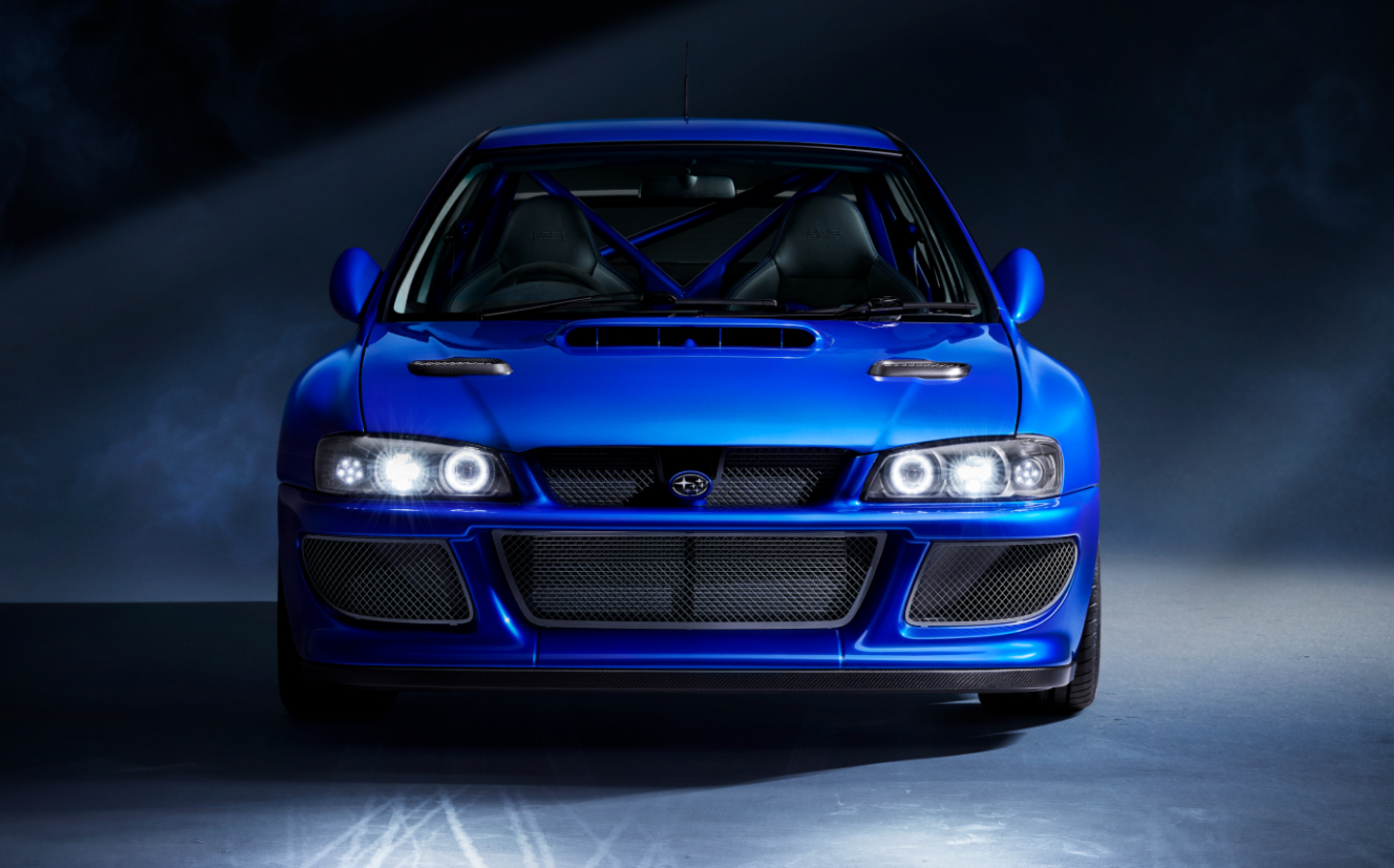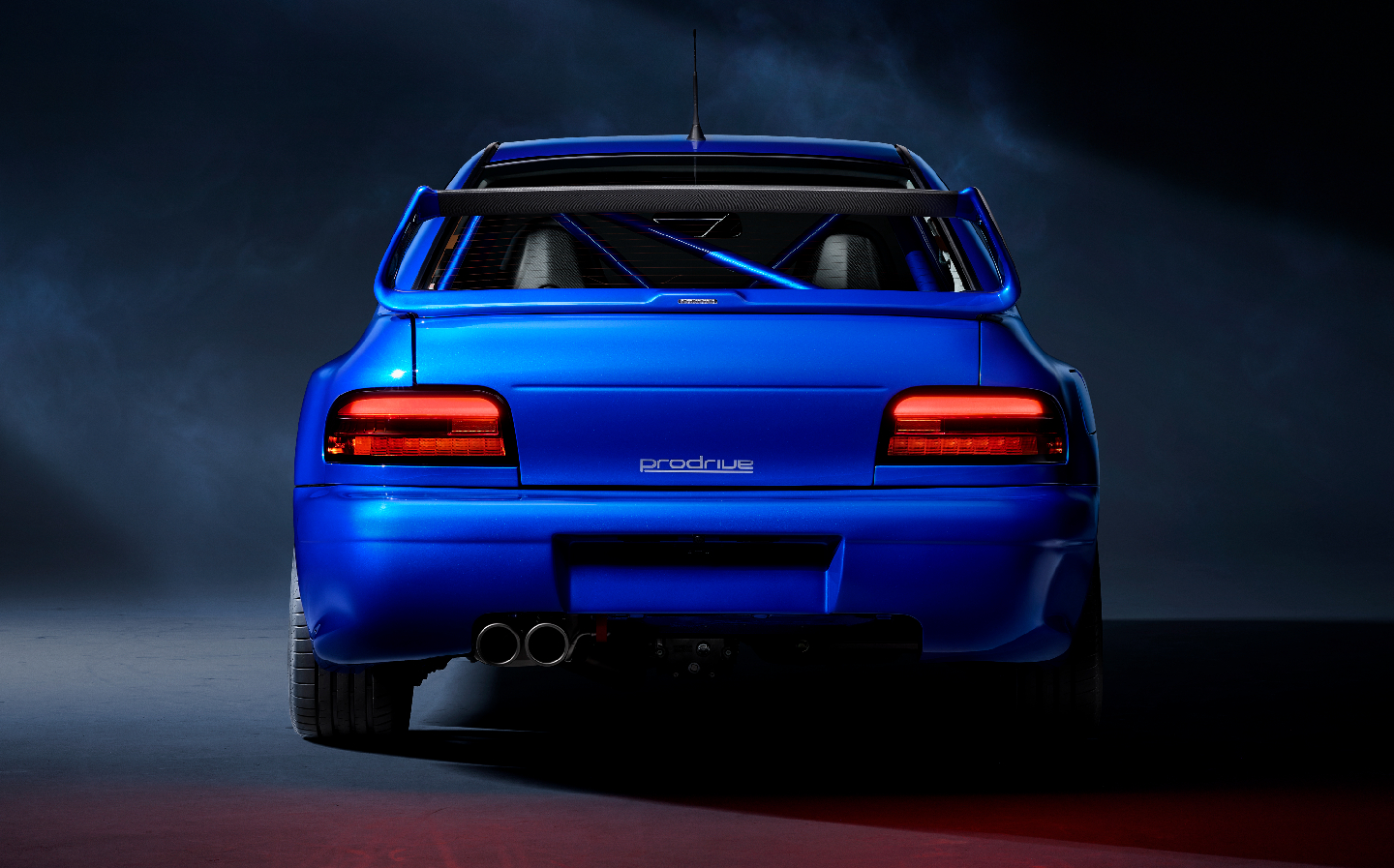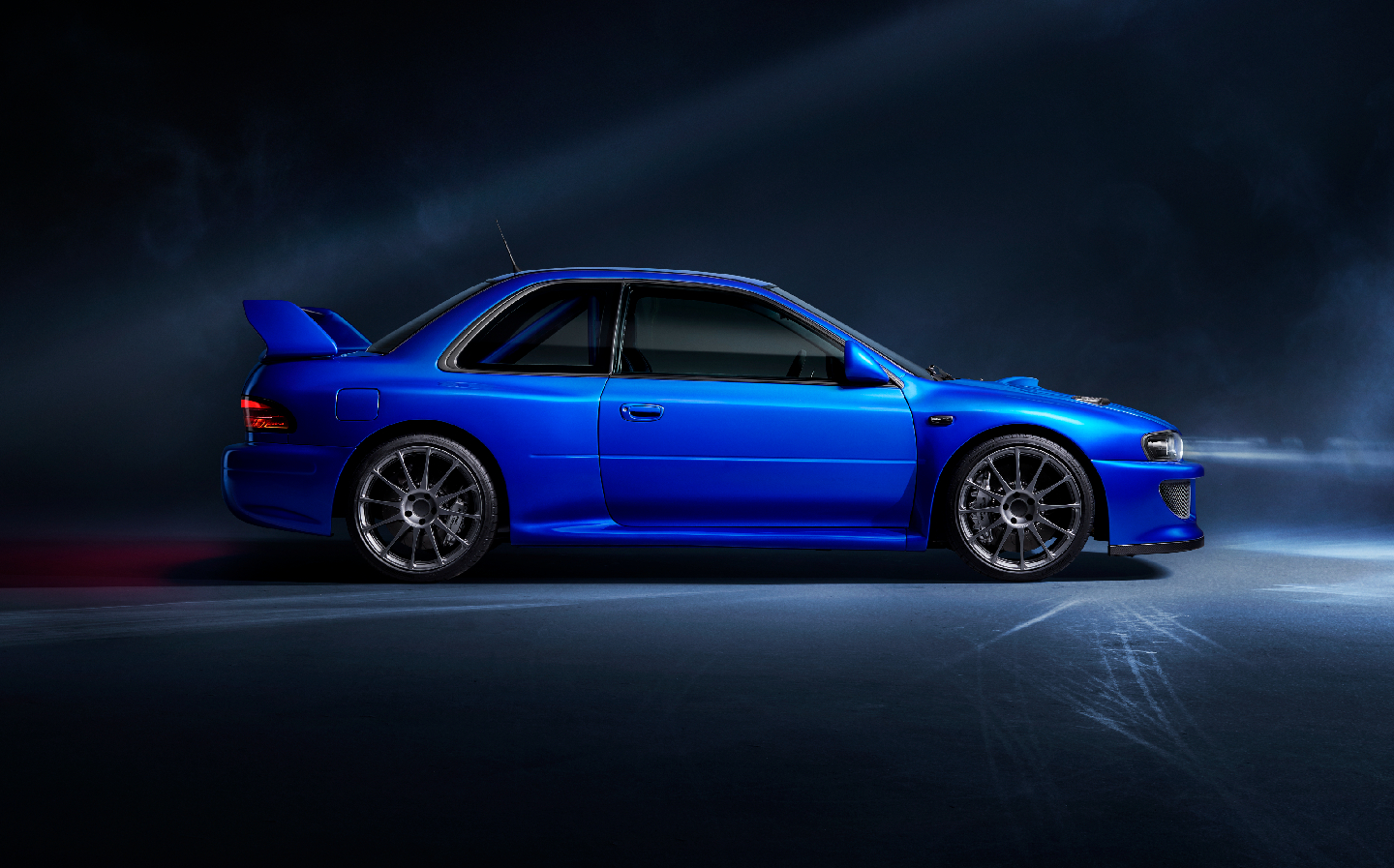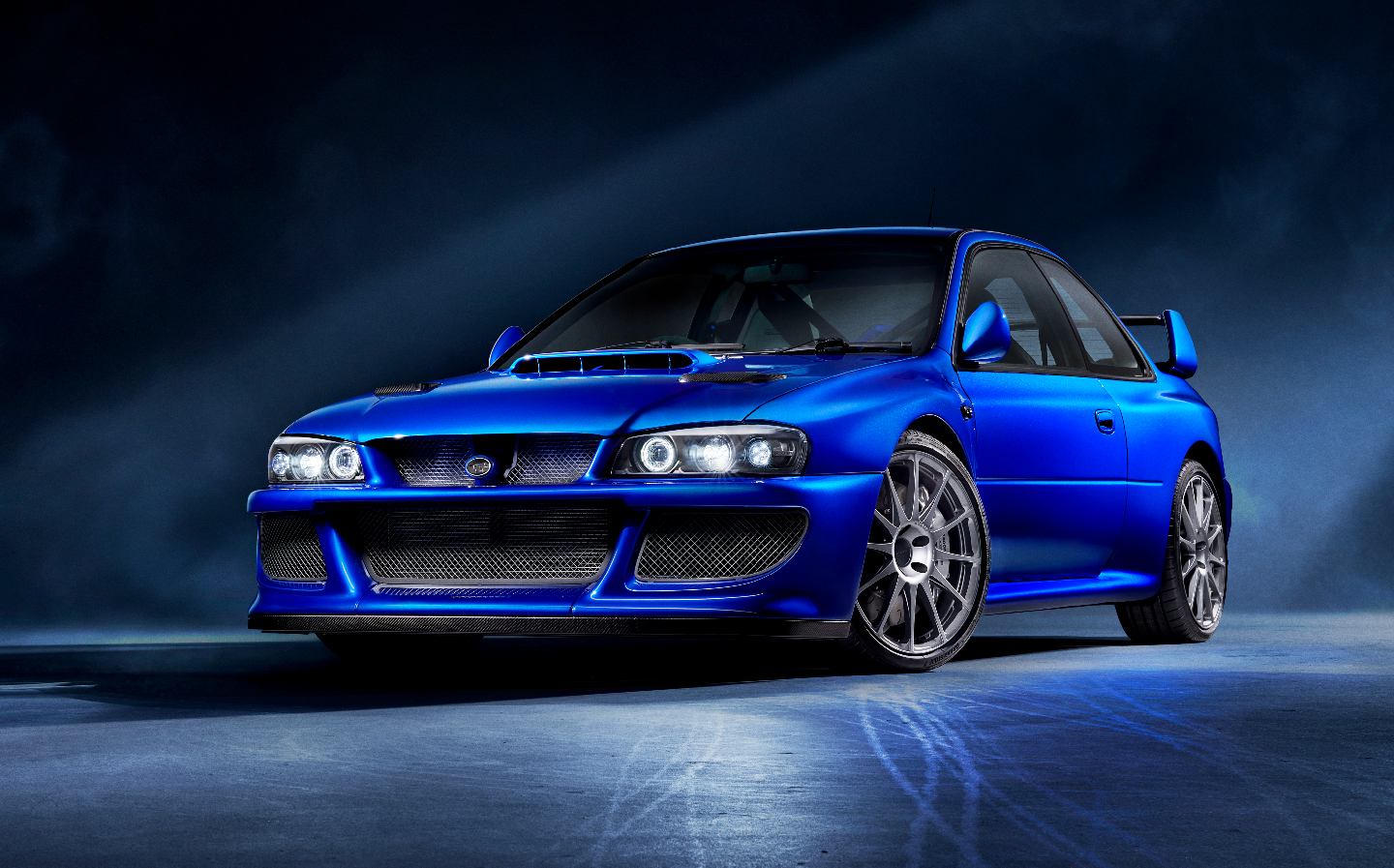Prodrive P25 review: Neck-snapping performance that would shock even Colin McRae
Don’t be fooled, this no ordinary Scooby
Depending on how you look at it, the Prodrive P25 is either a brutal, fire-breathing rally car that’s been sprinkled with a few mod cons for use on the road or a road car that’s been fitted with competition components to make it more rally car-like.
And this perception is important before getting behind the wheel because it colours the entire experience of driving the thing. The near-production prototype was much more extreme than I’d imagined, and to my mind a pretty tricky thing to get to grips with, but a very well-respected writer from another publication had told me the night before that it was much easier to drive than he had anticipated.
It occurred to me later that he’d been expecting to drive a version of Colin McRae’s 1997 WRC car that had been fitted with a touchscreen, whereas I’d had it in my head that I’d be climbing behind the wheel of a hotter version of the mid-1990s Subaru Impreza WRX STi road car. The truth is somewhere in between, though much closer to his expectations than mine.
The P25 does start out as a regular road car; David Lapworth, Prodrive’s R&D director and a legend in motorsport engineering, explained that his team started snapping up Imprezas a couple of years ago and managed to acquire 12 before enthusiasts started noticing the two-door models were suddenly in unusually high demand.
You might have read that the P25 starts life as the 22B, which was a limited-run special of the WRX released in 1998 to celebrate Subaru’s 40-year anniversary, but that’s not correct — any two-door of the right era will do as a base car, because Prodrive rips out just about every component and starts again.




And if you think about it, the 22B — of which there were only 400 built and 24 destined for homes outside of Japan — would make a rather lousy donor car as they’re about as easy to get your hands on as hen’s teeth, and each one now costs around a quarter of a million pounds. Even considering that just 25 examples of the P25 are being built, and its own lofty pricetag, that doesn’t make terrific business sense when any two-door will do..
But despite the base models being stripped back to the shell, and most components cast aside, as far as the UK’s Driver and Vehicle Licencing Agency is concerned the P25 is nothing more than a restoration project. Prodrive was very careful to make sure it conforms to the DVLA’s requirements, and doesn’t slip into “new” car territory, so that it doesn’t have to type-approve the finished cars. That would be a time-consuming and costly process.
Why bother with the P25 at all, though? Prodrive’s core business of building racing and rally cars is going great guns; isn’t creating a road car an unnecessarily complicated distraction? Lapworth reminds me that there’s another area of the company, the heritage department, which spends its time maintaining and restoring Prodrive’s old competition machines for private customers. It’s an area which will see natural growth over time but at the moment might involve just a couple of cars come into the workshop per year.
According to Lapworth it was the heritage team that first proposed the idea of a restomod based on the Impreza. A feasibility study resulted in an early protoype, which was shown off at Goodwood Festival of Speed in 2022. Despite a proposed price of £460,000 excluding VAT and local charges, 25 wealthy-enough people told Lapworth there and then that they wanted one. “So we really had to do it.”
It’s no surprise, really; there’s still a burning passion for those blue 1990s Imprezas, and Prodrive had a huge amount to do with that thanks to the famous 555-branded rally cars, which were piloted by British legends such as McRae and Richard Burns, and the handful of road-going specials. While Subaru seems to have abandoned that good will and heritage, clearly the folks at Prodrive spotted an opportunity.
Will there be other Prodrive restomods after all the P25s have been built? It’s too early to say, Lapworth told me, but never say never. “We could do another Subarus, perhaps, though we’ve worked on Ferraris, Aston Martins, Porsches… we could pick on any of them, or we could do something different.” That’s not a “no”, folks.
The DVLA regulations allowed a surprisingly large amount to be done before the P25 became a different car altogether. The headline upgrade is under the bonnet, with Prodrive enhancing the WRX STi’s original four-cylinder EJ25 boxer engine, which produced up to 341bhp in its day, with a Garret turbocharger plus bespoke valve springs, inlet and exhaust manifolds, and more, to make 450bhp. That’s 45 per cent more power than even McRae had at his disposal during the 1997 World Rally Championship.


Then there’s the Prodrive-built six-speed sequential transmission, with a “dog ‘box” derived from Prodrive’s race and rally version but softened for the road with helical teeth. If you’ve no idea what a dog box is, essentially it means improved durability and increased speed of shifting but at the cost of smoothness and refinement.
“What do I need to know to avoid damaging the components?” I ask engine supremo Tomasz Jermolaj, expecting complicated instructions. “You’ve got an electronically-controlled paddle shift and an engine limiter, so no. It’s idiot proof.” That’s lucky, I think to myself.
The four-wheel drive system is electronically-controlled, too, with a central e-differential that is managed by a Bosch controller with software that was tweaked to Prodrive’s own specifications — something Bosch hasn’t allowed any other tuner to do.
The list of custom parts goes on: there’s also an Akrapovic titanium exhaust, a lithium-ion battery to run the 12v electrics (saving weight compared with lead acid version), unassisted AP Racing brakes (with an option for carbon ceramics, as fitted to the prototype) and adjustable Bilstein dampers with bespoke suspension geometry.
The steering rack has been replaced, too, and the Prodrive-made 19in forged wheels have been pushed wider apart than on the original car.
If you’re wondering why they’re not painted gold, like on McRae’s WRC machine or the 22B (or even the WRX STi), it’s because the P25 continues the aesthetic of the Impreza P1 — another hot version of the WRX developed by Prodrive in response to the popularity Japanese grey imports. However, if a customer really wants the wheels painted gold, that’s what they’ll get.
The car I drove also had the optional rear half cage, which replaces the back seats, and most of the body panels have been replaced by carbon composite versions (formed using the original moulds from McRae’s rally car, which Prodrive has kept all these years). To remain a restoration, technically-speaking, the only body panel Prodrive wasn’t allowed to change were the doors, so they’re still steel.
I hear the DVLA is currently looking at its rules in these regards, and frankly I’m not surprised. Make no mistake, this is no normal Impreza; the changes allow pretty extraordinary performance: engage the electronic launch control system and 0-60mph takes less than three seconds, I was informed. The P25’s pricetag is hard to get your head around but at this point was starting to make a lot more sense.
Despite the stratospheric price and all of the competition components, from the outside the P25 looks very much like most other Imprezas, making the P25 perhaps the ultimate sleeper car. Other road users will expect it to be quick, no doubt, but no-one would imagine it might be able to outdrag a Lamborghini Aventador SVJ.



Aside from the wheels there are a few other telltale signs that the car lining up alongside you at the lights is something beyond the ordinary. The wing mirrors, for example, are stubby affairs — not pretty, but designed to reduce weight (they’re carbon composite, too) and overall width.
Look at the P25 from the front and the bulging wheelarches of the increased track make it look noticeably more purposeful than the WRX STi, and the increased cooling in the front splitter is obvious. You can see the headlights have been revised, too — now fully LED. The lights at the rear are also a giveaway, as are the dual exhaust pipes. Still, you’d have to be an enthusiast to be able to identify a P25 in the wild.
Inside, the modern touches are more obvious. The instrument binnacle is fully digital, for a start, and cycling between the Road, Sport and Sport+ driving modes using the button in the centre console changes its layout — along with the engine note.
Gone is the gearstick, of course, replaced by a single carbon paddle behind the right side of the wheel (away from you to shift down, towards you for upshifts).





Our car was fitted with figure-hugging reclining carbon seats from Prodrive, which proved a little uncomfortable for my long spine after a while behind the wheel — I wondered if the standard sports seats or fixed carbon jobs would have been better for me. Using the full harness instead of the three-point belt (both are supplied) might have been better, too, by holding back my shoulders and better securing me in place.
I did appreciate some of the other nods to comfort, though: the air conditioning prevented fogging when the rain started falling, and there’s a wireless charging pad for your smartphone (with a magnet to hold the handset in place, thankfully). You also get electric windows and USB sockets.
There’s even a touchscreen infotainment system fitted into the dash, allowing you to run Apple CarPlay and Android Auto. It’s a Pioneer unit that you can find on the shelves of Halfords but it does work pretty well for mapping.
You can pretty much forget about streaming music tracks or podcasts, though, as you won’t be able to hear them. When Jermolaj’s four-cylinder boxer was fired up (ignition switch to position one, then position two, then hold the start button down) the noise created made even the raucous Porsche 718 GT4 RS — a car I described as astonishing on track but too loud to drive home — sound vaguely acceptable.
It gets even more cacophonous when on the move, and there’s evidently little in the way of sound deadening. Press the clutch in and select first gear — CLUNK — then ease off the pedal under your left foot to get the P25 in motion. No throttle is required, I was told by Jermolaj, as the electronics would manage the throttle and prevent a stall.
Jermolaj planned to ride up and down the road with me from our base on the Scottish-English border, and answer any questions I might have, before I went out on my own. My route would have taken in Kielder Forest Park, venue of some notorious rally stages in the 1980s and 1990s (hence the photos, which for full transparency were taken the day before).
However the journey didn’t last long — while at a cruise in third gear the digital display flashed red like a missile launch screen, and displayed a message about a clutch fault. The P25 immediately lost all power. Jermolaj cleared the error message and the car came back to life. He explained that this was still a development vehicle (which may or may not end up belonging to Prodrive boss David Richards) and, while it had covered more than 20,000 miles of testing, sometimes the electronics can still detect a bug or two, which will be ironed out before customer deliveries are made.
While I was shown how to clear the error messages and not to worry about it, just to be sure I brought it back to base and Jermolaj plugged in a laptop. The verdict — not an electronic fault but a mechanical one relating to the gearbox, and it’d need a proper repair back at Prodrive’s base in Banbury, some 300 miles south.
It was frustrating, though the electrics had done their job and detected the fault before any damage was done. What’s more, I can now count myself alongside former British Rally Champion Mark Higgins and a handful of GT racers as part of the P25’s test team.
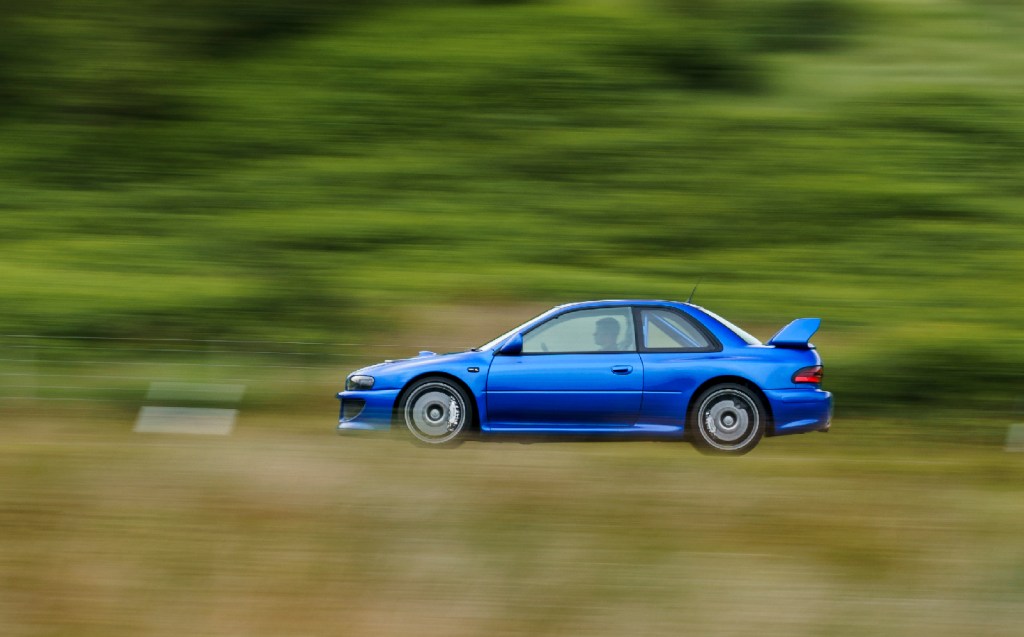
The following day, I arrived at Prodrive HQ to finish my test drive. The roads around Oxfordshire aren’t quite Kielder but would have to do. Once again I set off without throttle, and that worked on the flat but, as I found out at a busy roundabout a few minutes later, if you stop on an incline you very much do need to raise the revs if you want to avoid stalling. Fortunately, with the clutch down the car restarted and I was able to pull away, though now slightly blushed.
Prodrive was keen for feedback after my test drive. I usually tell engineers to read the review but in this instance did mention the ease of pulling away as an area which customers might appreciate a little more finesse. After the noise from the engine bay, vibrations through the cabin and harshness of the transmission, the clutch feel is a major signal to the driver that the P25 was born on a rally stage. It feels as much out of place in suburbia as a lion in a nursery school, and the average driver might find it just as frightening.
Prodrive wouldn’t tell me who its 25 customers are, though I don’t think I was too far off when I suggested most buyers must have race or rally experience. Tellingly, all but five cars have been specced with the rear half cage.
Once outside town the P25 started to make more sense, even to me. As the speeds increased, I began to gel with the car. Jermolaj had told me the dog box will prefer upshifts during hard acceleration but to downshift only when off the throttle, and with this in mind I began thumping up the cogs and giving the turbo a workout — CLUNK-weeeEEEEE-CLUNK-weeeEEEEE-CLUNK-weeeEEEEE — then dropping back down the ratios as gracefully as possible.
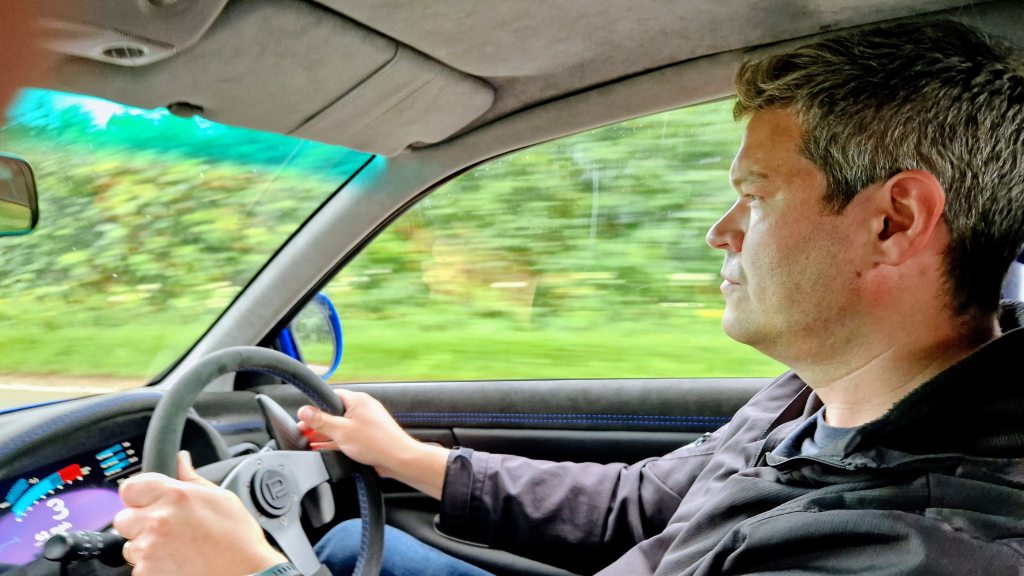
It felt like I had begun reading the P25’s various moods and responding as best I could. Without doubt, this is a car that tells the driver what it likes and requires them to adapt, rather than one that will bend itself to the driver’s own style.
There’s a lot to take in at first. As the speeds increased and I got used to the gearshifts, the brakes started to come front and centre in my mind. There’s no servo on them, no hydraulic or electronic assistance, which means the pressure you put through your right leg is the pressure applied to the disc. And that means standing on the pedal hard when approaching a corner at speed, especially when the vented discs (380mm front, 350mm rear) and pads are cold.
There’s no ABS, either, though the front end grip — even in drizzly weather — is so extraordinary, and the brake feel so progressive and natural, as to make it unnecessary. There were no moments when I found myself locking the front wheels, even once I’d started to tune into the ebb and flow of the car and began pushing on a bit harder.
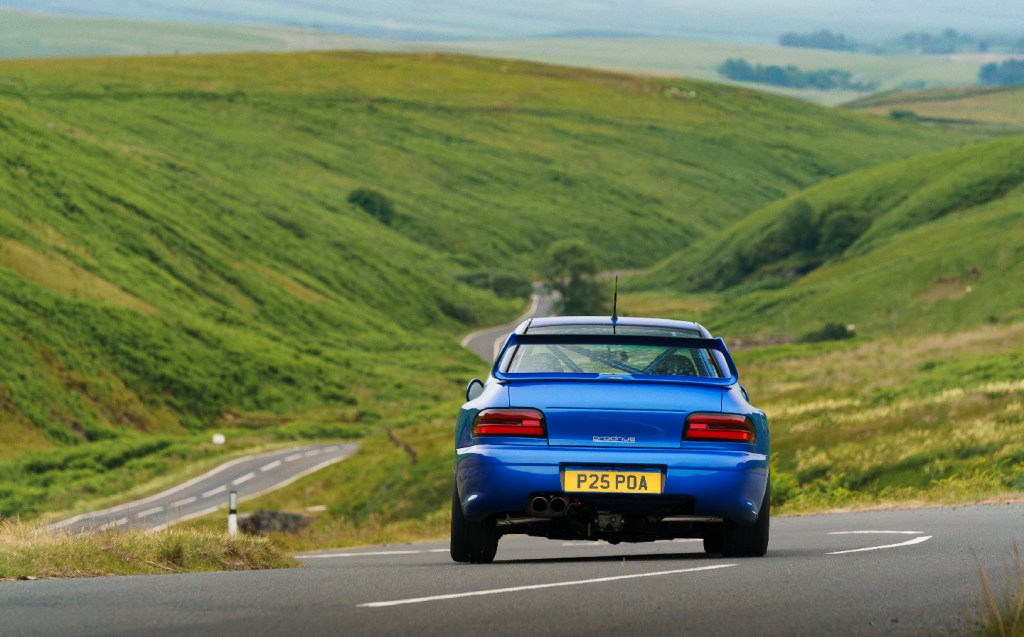
The steering, too — assisted but heavy and with a quick ratio, making it feel darty at the front end — takes some effort and finesse. Thanks to the carbon body panels and relatively pared-back interior, the P25 is a light car for its size and power, at less than 1,200kg, and that allows for whip-like direction changes.
After a short time I switched into Sport mode, which adds a great deal more loudness and sharpens up the chassis, and then Sport+ which is another massive stepchange again in the personality of the car. In this mode, the Garret turbocharger is made to spin at high speed, eliminating any evidence of lag and resulting in significantly sharper performance, while the e-diff alters the way power is distributed to the front and rear wheels. It’s a heady mix of extraordinary acceleration, cornering poise, and noise, as the turbo screams its approval.
The ride is harsh at any speed but, as with the transmission, the suspension and damping feels much more comfortable at a lick. More evidence that this is not a car for pottering around — it wants to be driven hard.
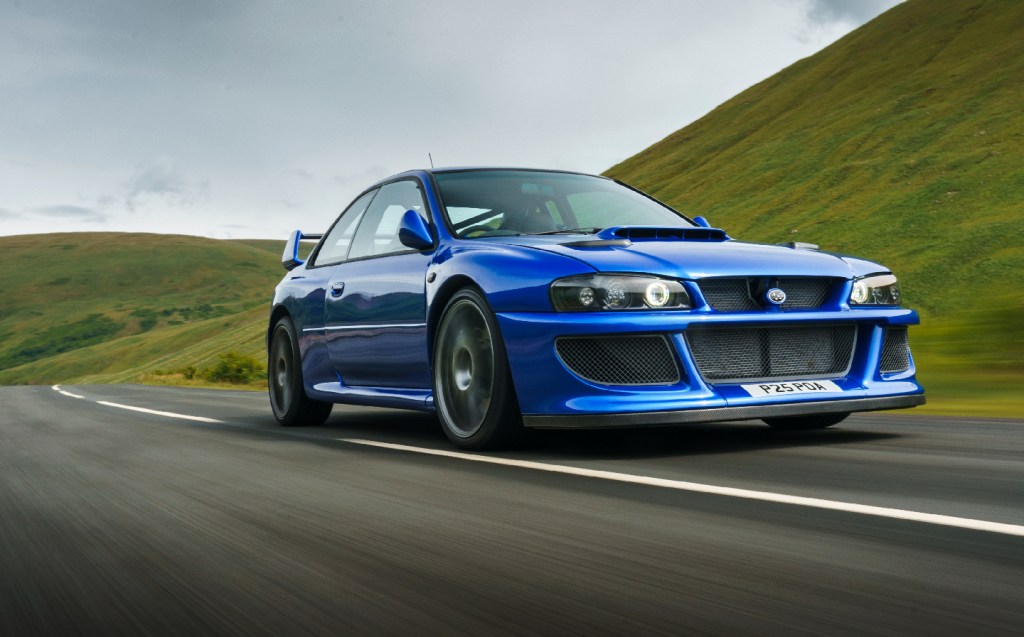
Back at base I had one further request for Jermolaj: could he show me how to engage the launch mode? No problem, he said climbing in. He ran through the short sequence required and I found myself with my left foot on the brake and right foot planted on the throttle, pistons thrumming, exhaust crackling and turbo whirring with eager anticipation. “Now step off the brake.”
BOOM — the traction control, electronic differential and all 443 lb ft of torque combined in an instant to produce acceleration of such ferocity that my head snapped back and hit the rollcage (told you I was tall).
I’ve used launch control in a number of cars, including electric supercars with their instant torque, and nothing quite prepared me for the P25 at its most angry. Zero to 60 in under three seconds? I didn’t have a Vbox rigged up but I’m a believer. Even in the wet it has managed that sprint in 3.2sec, Jermolaj claimed.
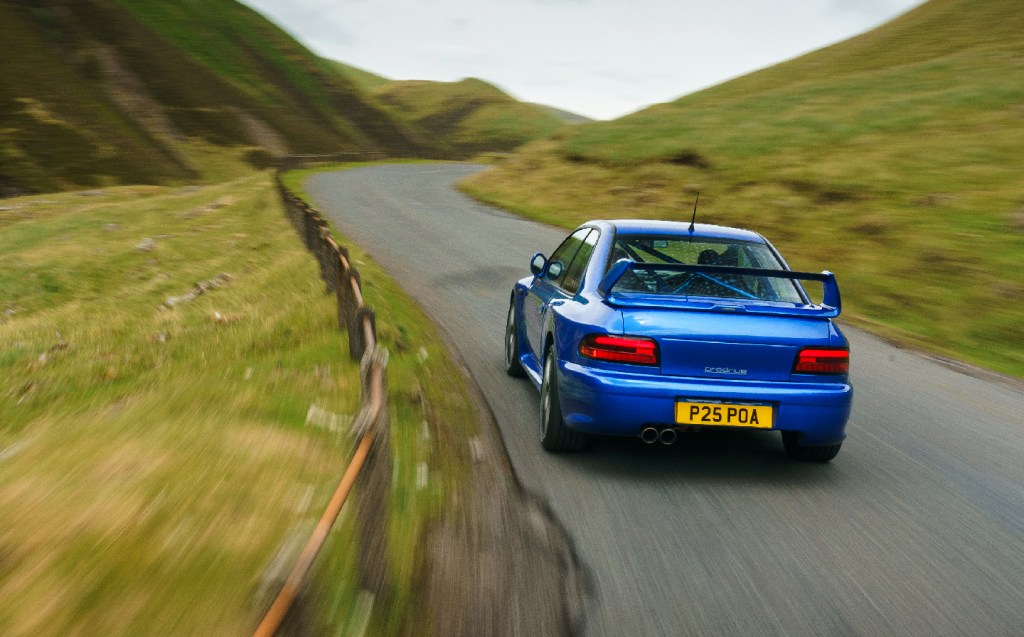
How best to summarise the Prodrive P25, then? In truth I feel that I hadn’t fully got to grips with it, given my shortened time behind the wheel, but it’s clear from the moment you fire up the engine that it’s a car that demands your full attention.
Once on the move it’s also apparent that this is a car that requires a level of mechanical comprehension and sympathy — you’ve got to understand what’s going on with each of the different components underneath you, and only by fully appreciating what’s happening with the car can you extract its full potential. And it rewards skilled driving while punishing hesitancy and inexperience.
The P25, at the end of the day, is much closer to a true world rally car than anything that has come before, and in terms of power, at least, even more brutal. No amount of touchscreens, wireless phone chargers and USB sockets can hide that fact that the Prodrive P25 is, under it all, a very serious, brutal, furious thoroughbred. This is not a car that you’d want to drive every day but could easily become a weekend addiction.
The question is, at half a million quid a piece, will its wealthy owners dare to drive the P25 as it demands to be driven?
Follow @wdron Tweet to @wdronPhotos by Dean Smith/ Prodrive
Related articles
- If you enjoyed this Prodrive P25 review, check out what Jeremy Clarkson had to say about this £320,000 Alfa Romeo GTA restomod
- Also take a look at our interview with David Richards, Prodrive boss and former world rally champion, on his life in cars
- Think the P25 is pricey? It’s a third of the cost of the RML Short Wheelbase restomod that Dron drove earlier this year
Latest articles
- Volkswagen Tayron 2025 review: Useful seven-seat SUV and decent PHEV — just not at the same time
- Skoda Enyaq 2025 review: Same book, different cover for electric SUV
- Lewis Hamilton wants to design a modern day Ferrari F40 with manual gearbox
- Dacia Bigster 2025 review: The ‘anti-premium’ family SUV that punches above its weight
- Your car’s worn tyres could be being burnt illegally in India, investigation reveals
- Open-top 214mph Aston Martin Vanquish Volante is world’s fastest blow-dry
- F1 2025 calendar and race reports: The new Formula One season as it happens
- Alfa Romeo Junior Ibrida 2025 review: Hybrid power adds an extra string to crossover’s bow
- Top 10 longest-range electric cars: all with over 400 miles per charge (officially)


